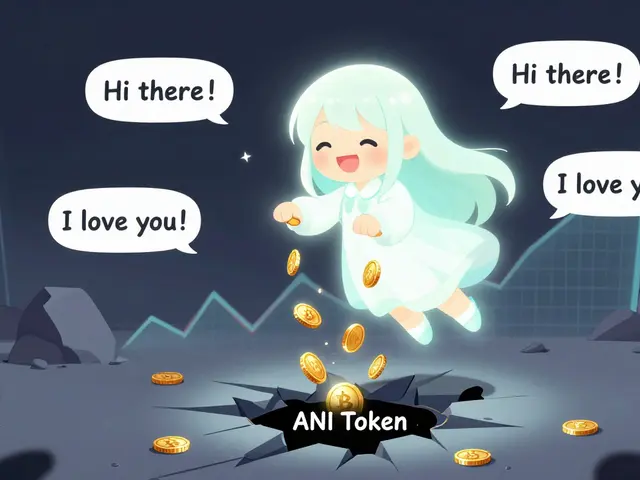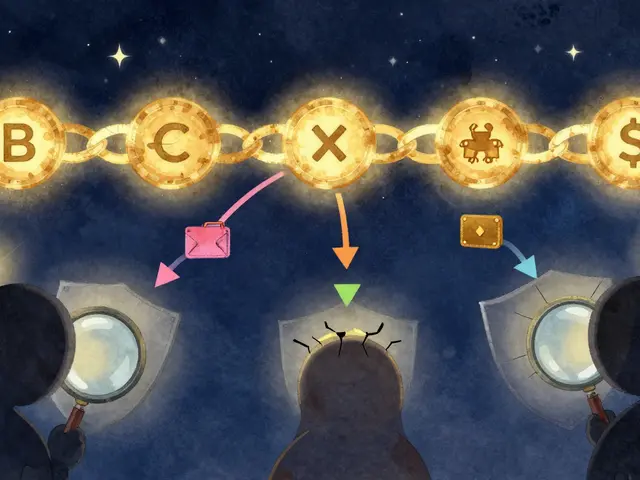Crypto Swap Review – Your Guide to DEX Platforms and Fees
When you hear Crypto Swap Review, a systematic evaluation of decentralized exchange swap features, fees, security and user experience. Also known as swap assessment, it helps traders decide where to trade without trusting a middle‑man.
At the heart of any Decentralized Exchange (DEX), a platform that lets users trade tokens directly from their wallets lies the Liquidity Pool, a reserve of tokens that powers instant swaps on DEXs. The pool’s depth determines how much price impact you’ll see when you trade a large amount. Swap Fee, the cost charged by a DEX for each token exchange is the other piece of the puzzle – it directly eats into your returns and varies wildly between platforms.
What to Look for in a Crypto Swap Review
A solid review breaks down three core areas: security, cost, and usability. Security covers contract audits, ownership centralisation, and how the DEX handles emergency withdrawals. Cost isn’t just the headline swap fee; you also need to factor gas fees, slippage protection, and any hidden bridge charges. Usability includes the UI design, wallet compatibility, and the speed of order execution. When you compare Uniswap, PancakeSwap, or newer entrants like Uniswap V4, these three pillars reveal which platform fits your trading style.
Another key angle is the tokenomics of the native governance token, if the DEX has one. Tokens like UNI or CAKE often come with staking rewards that offset swap fees, but they also bring volatility. A good crypto swap review will show you the net effect of staking rewards versus price risk. This helps you decide whether the token adds value or just adds noise to your cost calculations.
Regulatory awareness is becoming a must‑have section in every review. Some DEXs operate on chains that attract regulatory scrutiny, while others stay in jurisdictions with clear crypto‑friendly policies. Knowing if a platform is audited by reputable firms or listed on reputable data aggregators can save you from future headaches.
Depth of market data matters too. Reviews that include on‑chain analytics – like total value locked (TVL), daily swap volume, and active address count – give you a reality check. A DEX with high TVL but low daily swaps might indicate dormant liquidity, which can hurt you during volatile market moves.
Community support rounds out the picture. Active developer forums, responsive Twitter feeds, and transparent roadmap updates are signs of a healthy ecosystem. When a crypto swap review highlights community health, you get a sense of how quickly bugs are fixed and new features rolled out.
Finally, practical guidance turns theory into action. Step‑by‑step walk‑throughs for connecting wallets, adjusting slippage, and confirming transactions bridge the gap between reading a review and actually trading. Including screenshots or short video pointers (even if just described) makes the review actionable for beginners and seasoned traders alike.
All these elements connect back to our central idea: a crypto swap review isn’t just a list of pros and cons – it’s a roadmap that ties security, fees, liquidity, tokenomics, regulation and community into a single decision‑making framework. By understanding how each piece influences the others, you can pick the DEX that aligns with your risk tolerance, cost expectations, and trading frequency.
Below you’ll find a curated collection of articles that dive deep into specific DEX platforms, fee structures, liquidity strategies, and safety checks. Whether you’re hunting the lowest swap fee, the safest contract, or the most rewarding token incentives, the posts ahead break down the details you need to trade smarter.
QuickSwap V3 (Manta) Review: Zero‑Fee DEX on the Manta Network
A deep dive into QuickSwap V3 (Manta), the zero‑fee DEX on Manta Network. Learn about fees, liquidity, wallet setup, rewards, traffic data and risks before you trade.





